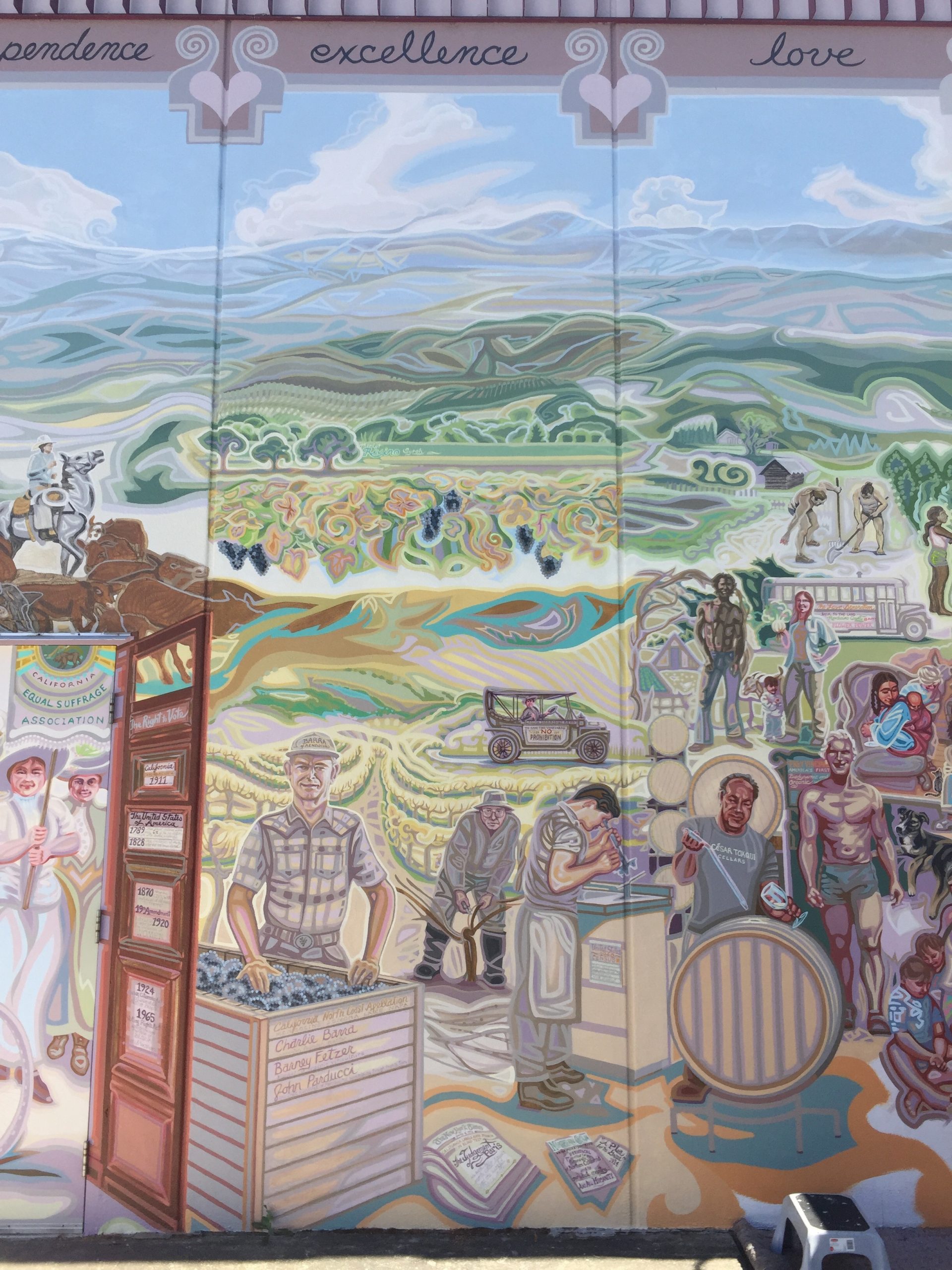SECTION FOUR
This panel shows a vineyard, patterned on Rivino Winery’s tasting zone overlooking the Russian River.

A decorative band of Zinfandel grapevines is painted over the foreground, and now a few changes have been made! For one thing I added the third iconic tree…
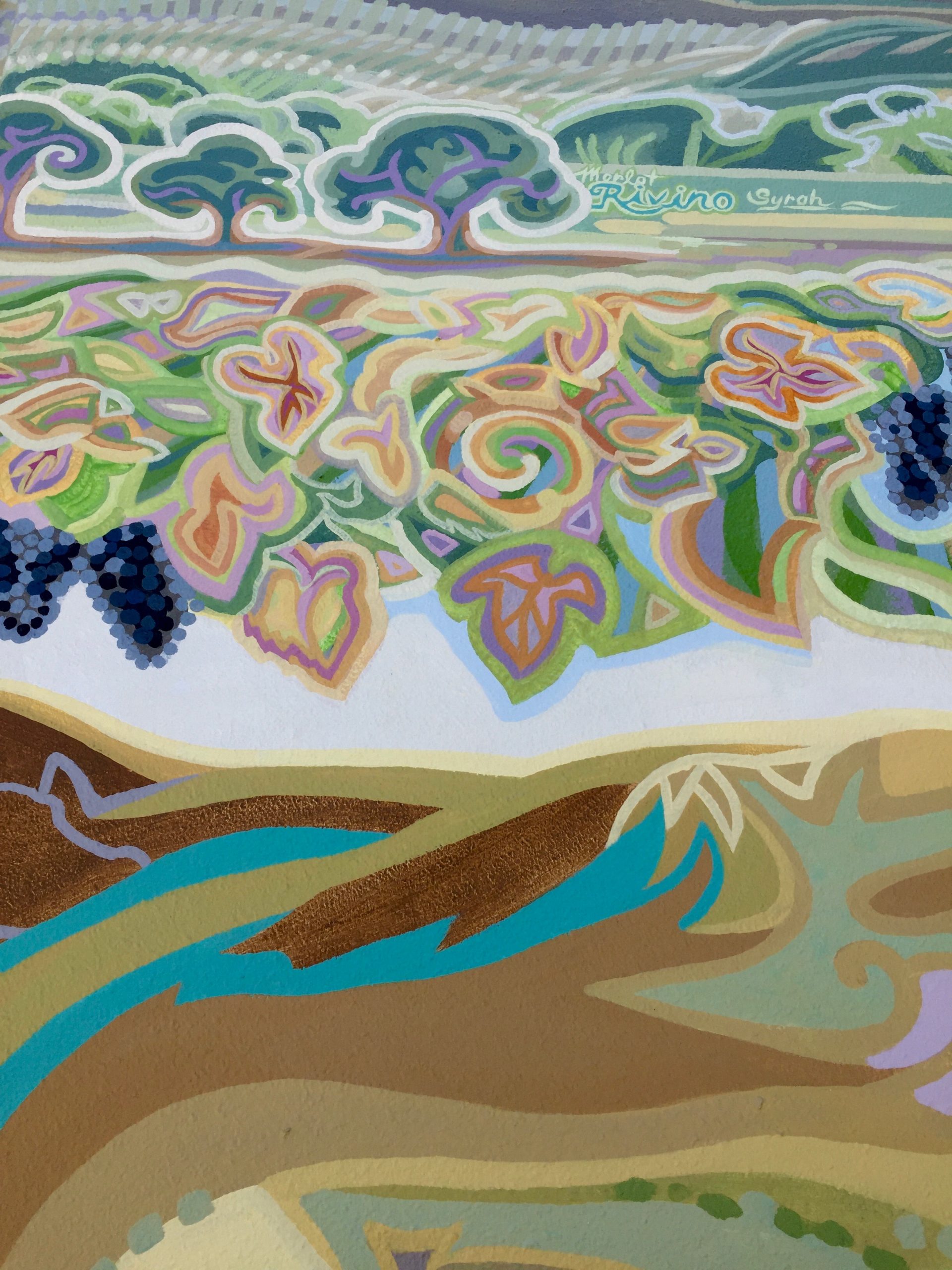
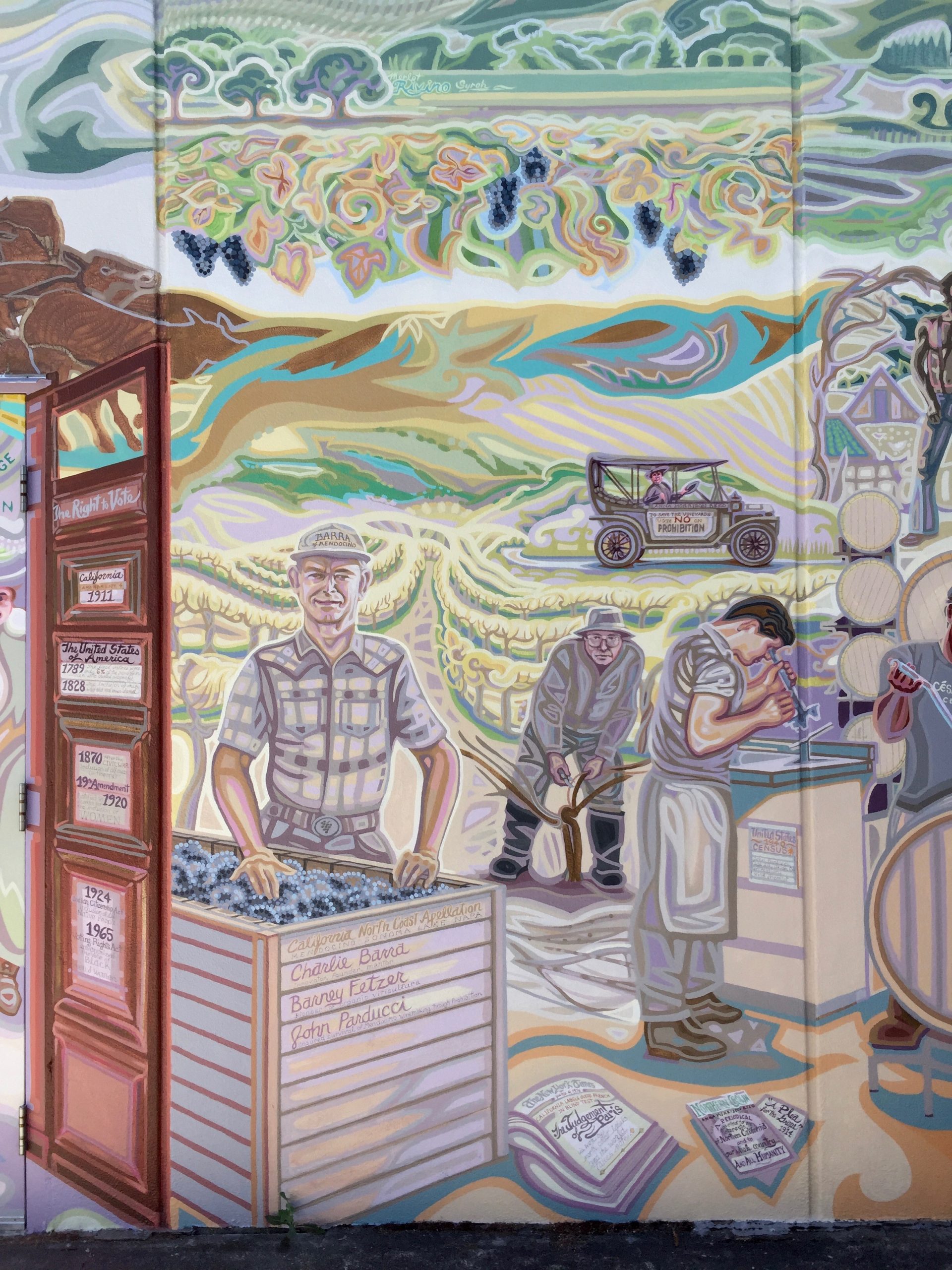
Mendocino County is one of California’s largest and most climatically diverse wine growing regions, and now a leader in organic grapes and wines.
Winemaking
- Viticulture in California dates back to the Spanish missions of the 1700s when vineyards were planted to make wine for mass.
- Yet again, the Gold Rush played a role in history. California’s ballooning population in the mid-1800s led to an exponential increase in demand for meat and all types of staples, including wine.
- Prohibition nearly choked the growing industry, but it gradually recovered, an effort championed in Ukiah by the Parducci family.
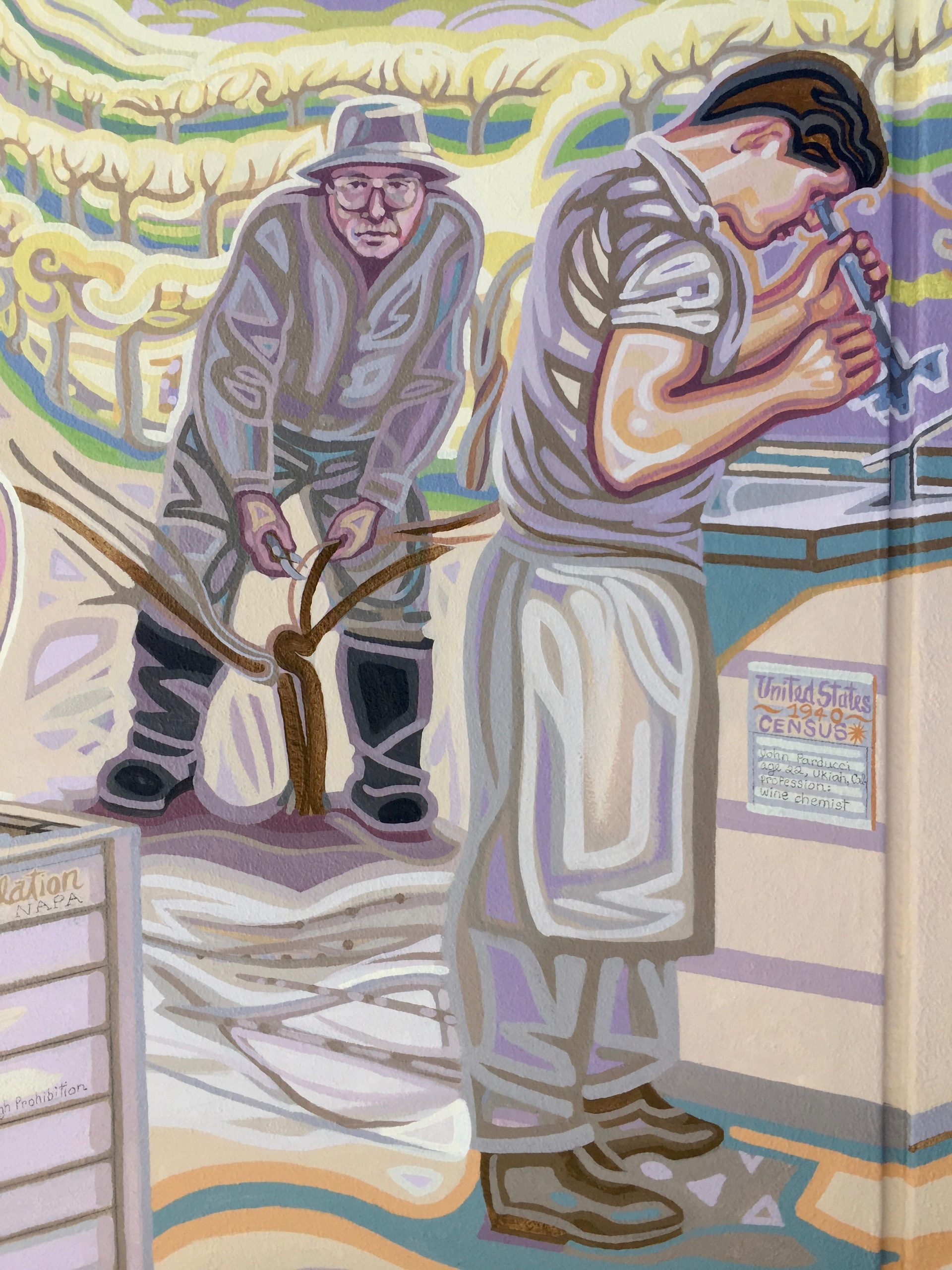
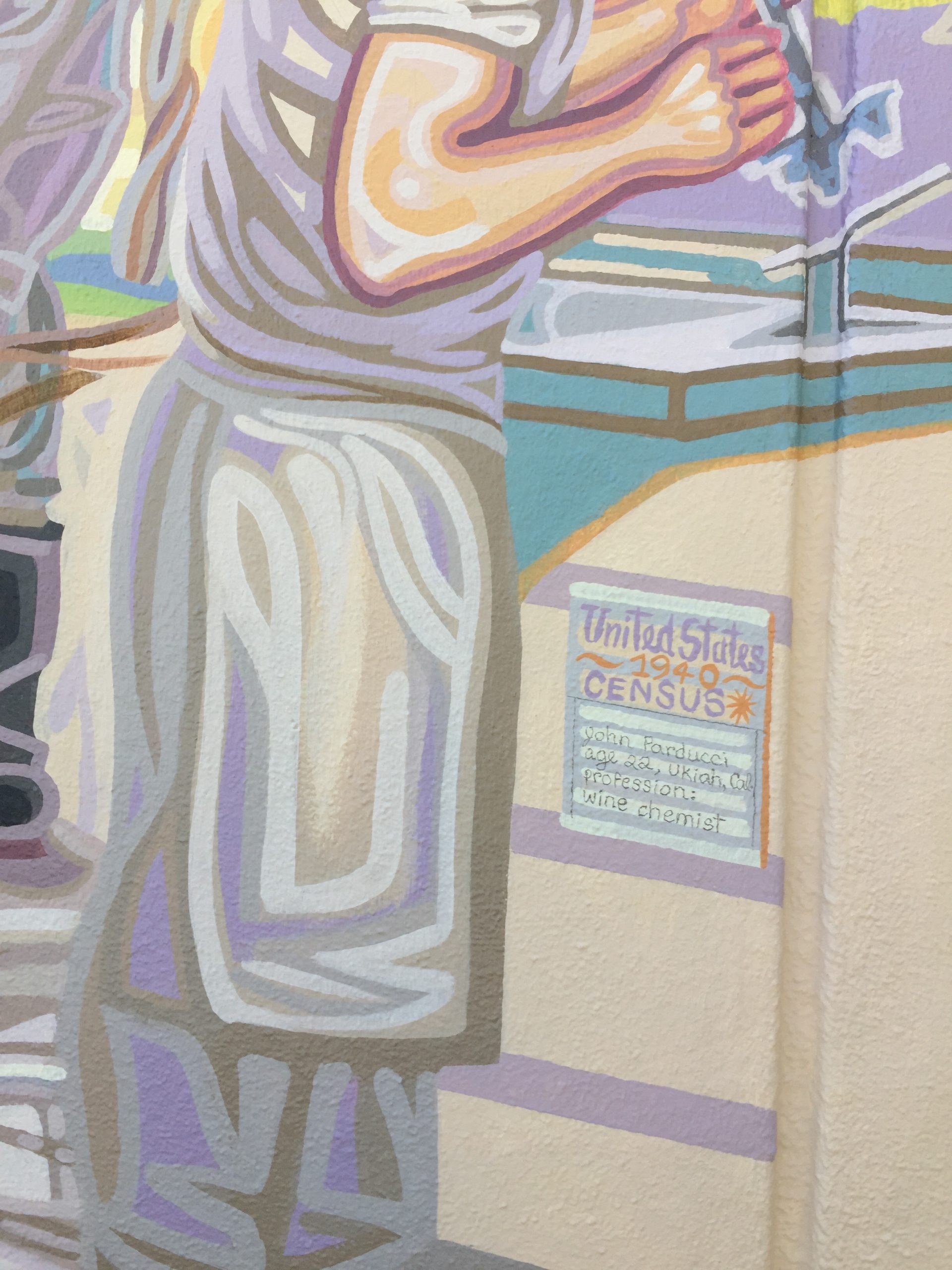
During the 1960s and ‘70s, a renaissance in wine making led to higher quality production.
The Judgement of Paris
The tipping point came at a French event called The Judgement of Paris, when California wines were blind taste-tested against the French and swept the competition. Both red and white winners were from the California North Coast Appellation.
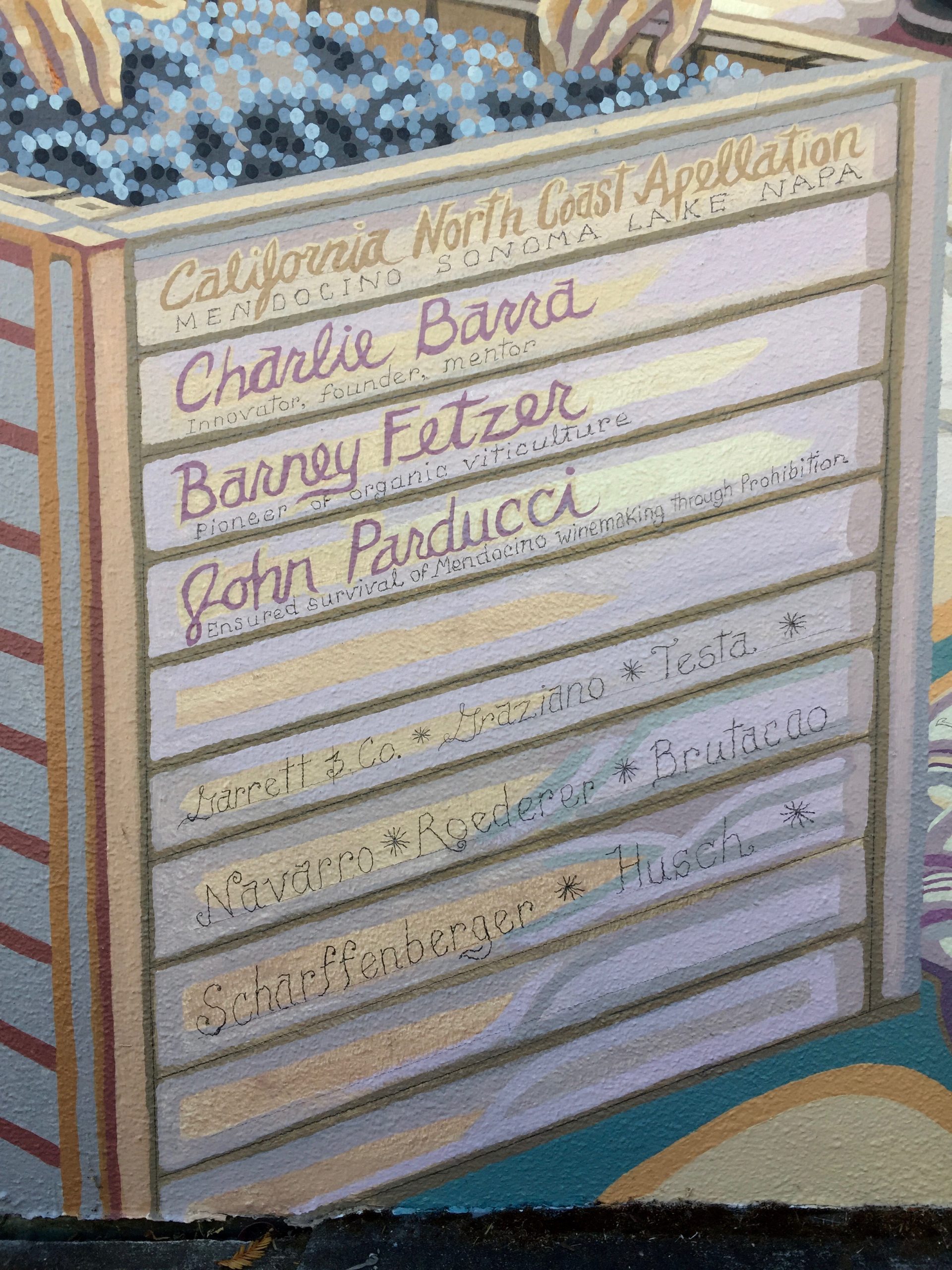
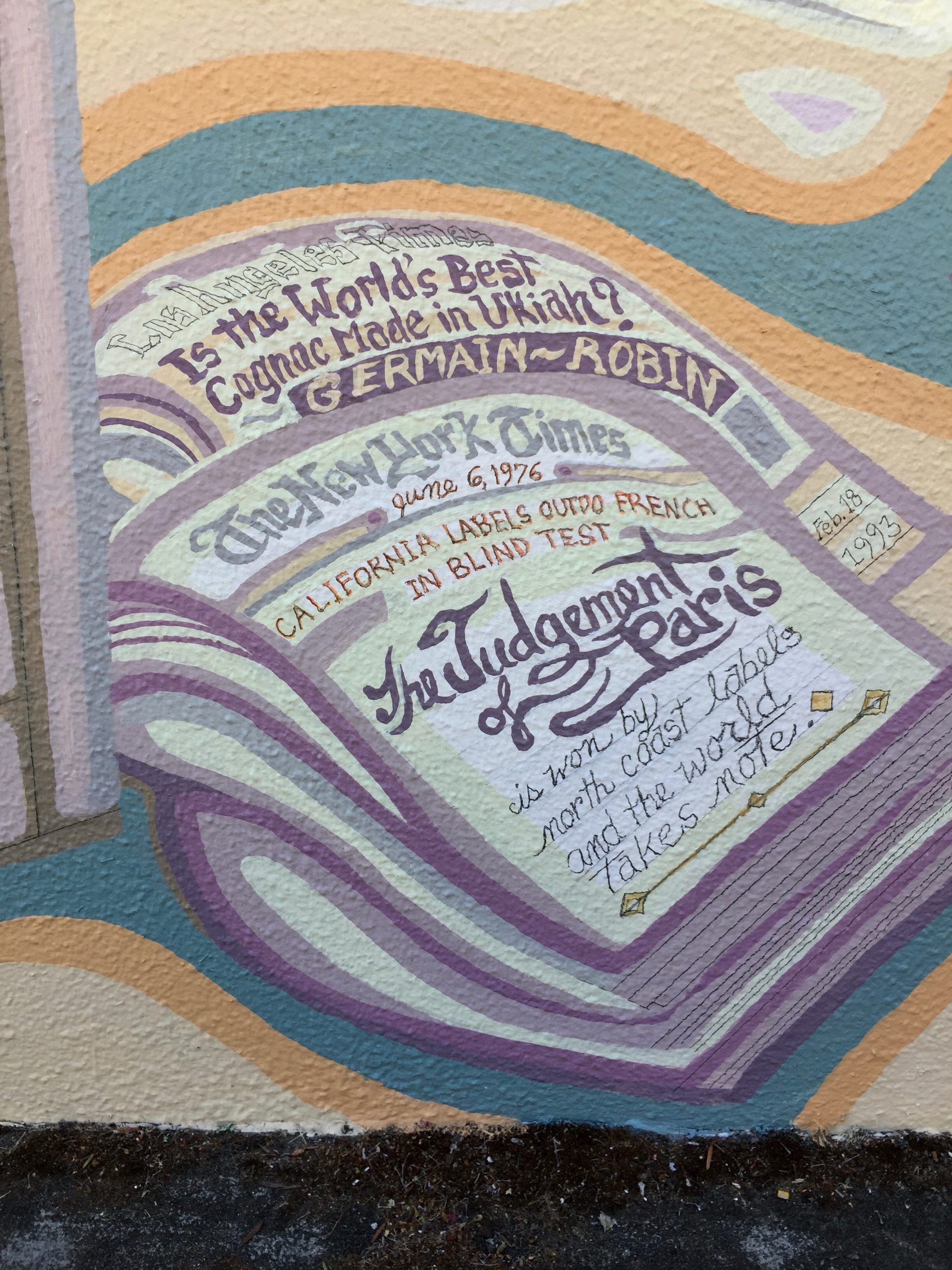

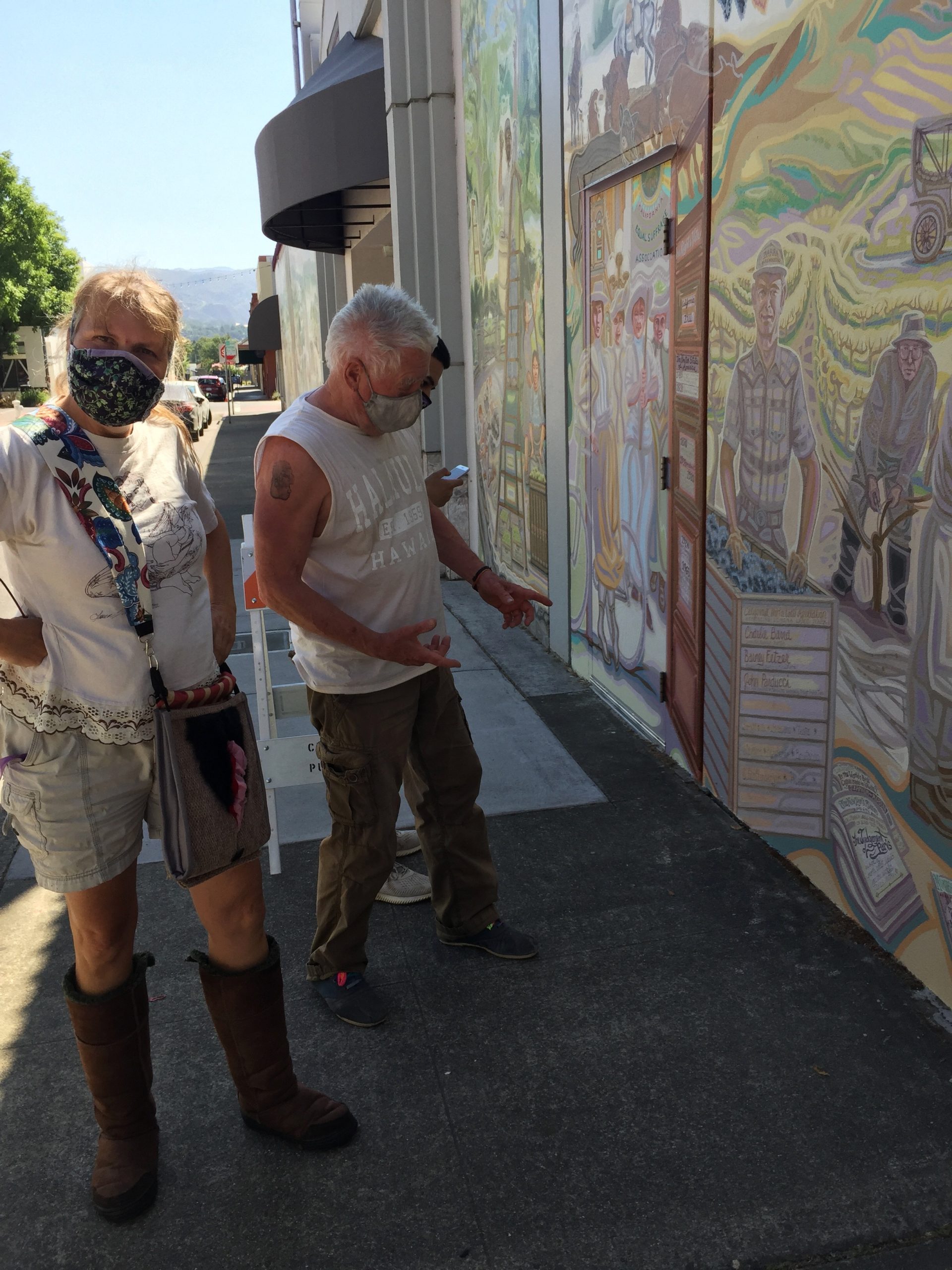
Ansley Coale, local rancher and professor of ancient history, picked up a young French hitchhiker one day, Hubert Germain-Robin, whose family in Cognac had made cognac for hundreds of years.
The two founded Germain-Robin in 1982. The company produced small batches of excellent brandy that was served to Ronald Reagan, Mikhail Gorbachev, Francois Mitterand and Bill Clinton. What I painted was the Los Angeles Times headline in 1993, “Is the Best Cognac Made in Ukiah?”
Charlie Barra was an innovator and one of the founders of the California North Coast Appellation. He was born near Ukiah to Italian immigrants from the Piedmont region, where both his parents’ families had worked in wine-making since the 1800s. All of the Barra boys worked in the family vineyard where Charlie learned to prune vines at age 10.
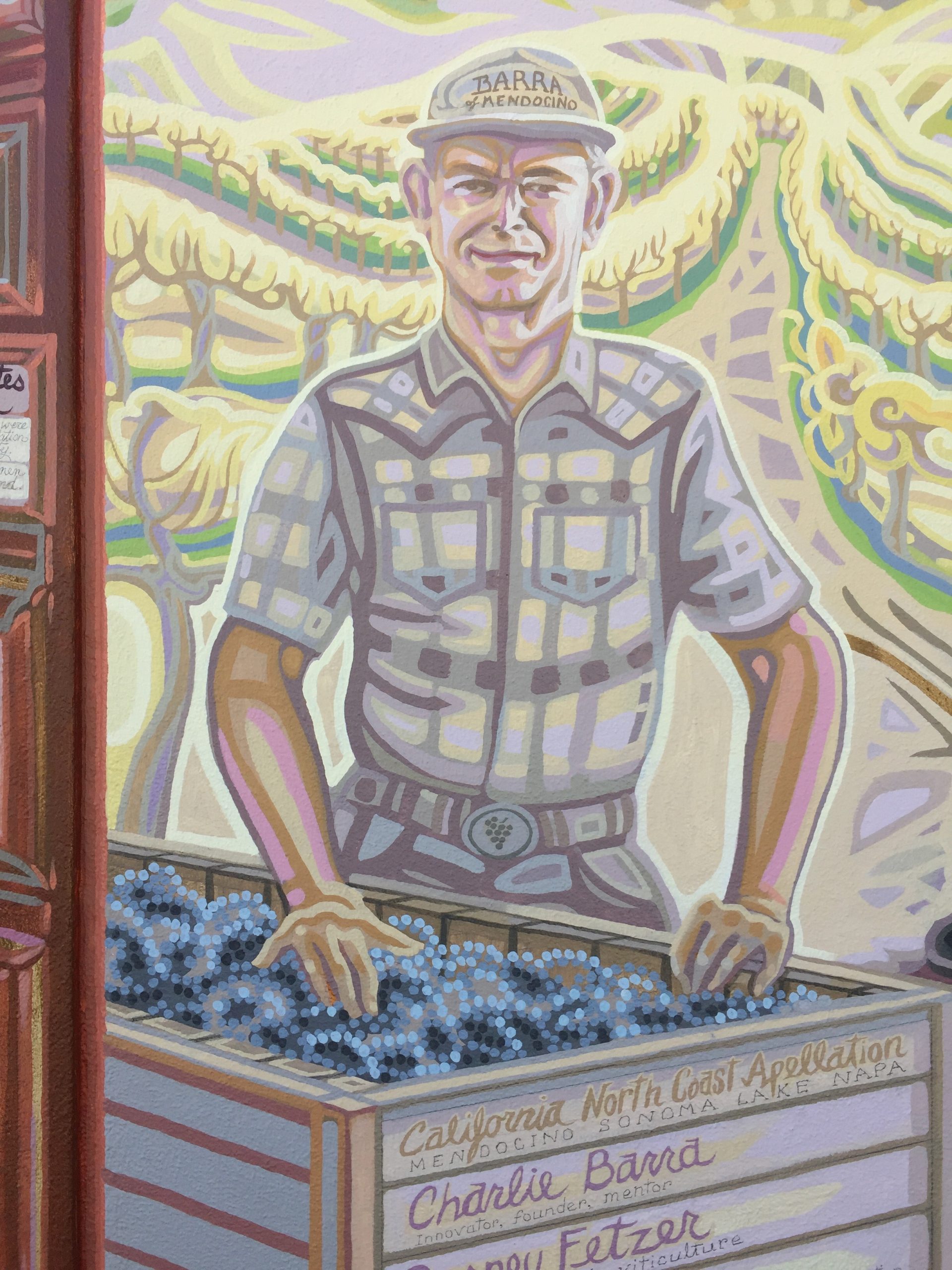
Charlie stands in front of the type of heavy wine bin that he made obsolete, being the first to use large rolling grape gondolas during harvest. He championed North Coast varietals and successfully pushed for the labeling requirement that a wine must contain 75% of the varietal it is called (up from 51%!)

Barney Fetzer started the family wine-making project when he and his wife Kathleen bought a ranch with a run down house and an old vineyard in Redwood Valley. The entire family including 11 children pitched in. Barney thought it would was great to grow grapes but even better to make and sell your own wine. He felt California wine-making would evolve into two types of wineries: big corporate entities producing large undistinguished batches, and small family-owned operations that would make highly individualized quality wines. He wanted to champion the latter! He saw Mendocino County as an unknown region and wanted to put it on the wine map.
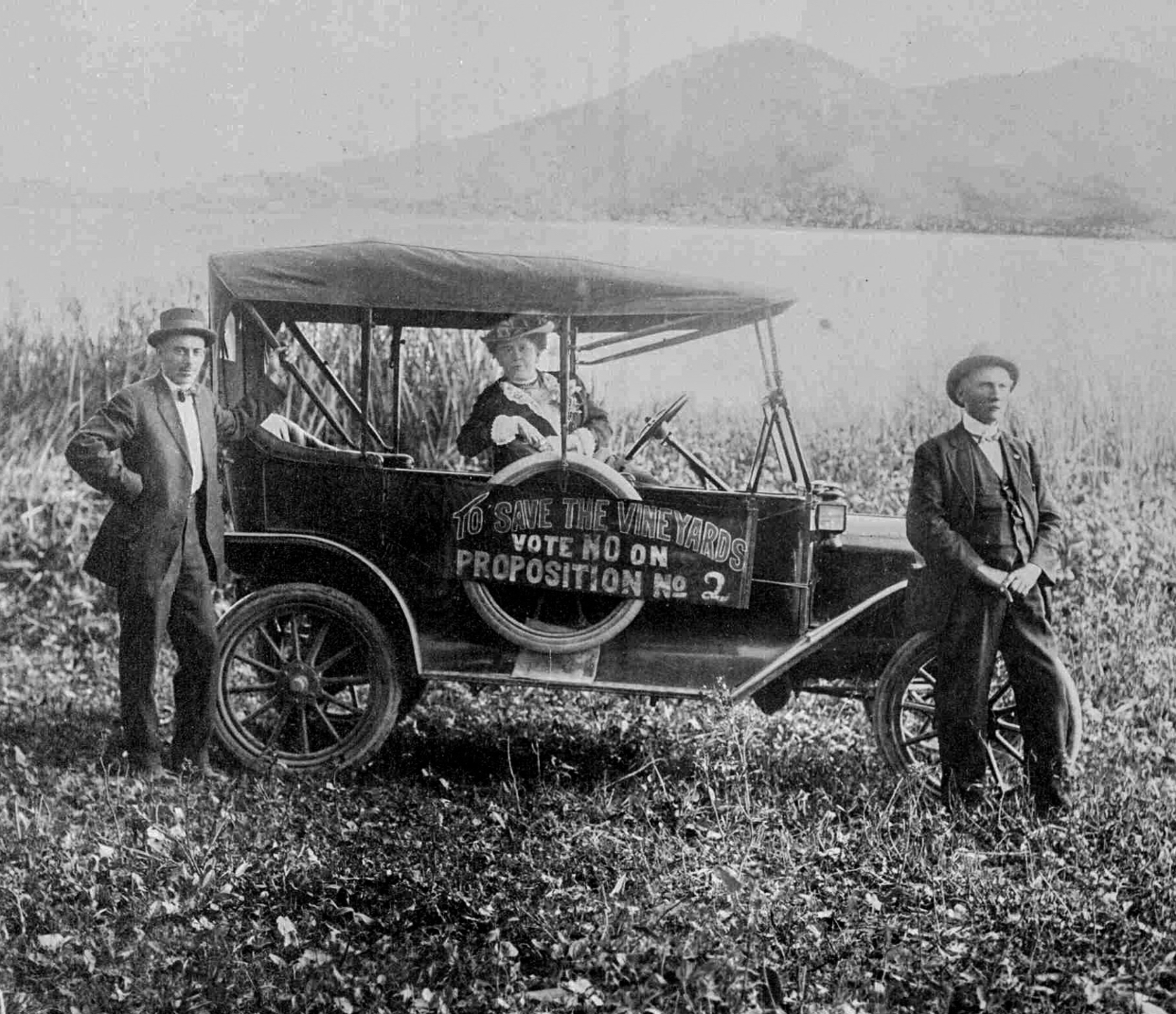
Anna Morrison Reed, I learned from Alyssa Ballard of the Mendocino County Historical Society, is one of Ukiah’s least known historical figures who should be a household name. She published her first poem in the San Francisco Press when she was 12, taught school at 17, and rescued her family from poverty by lecturing across Northern California before she was 23. She published the Northern Crown, a daring “Periodical of Literature and Advertising devoted to the interests of Northern California, and in a broader sense, to our whole country and all humanity.” Well said, Anna!
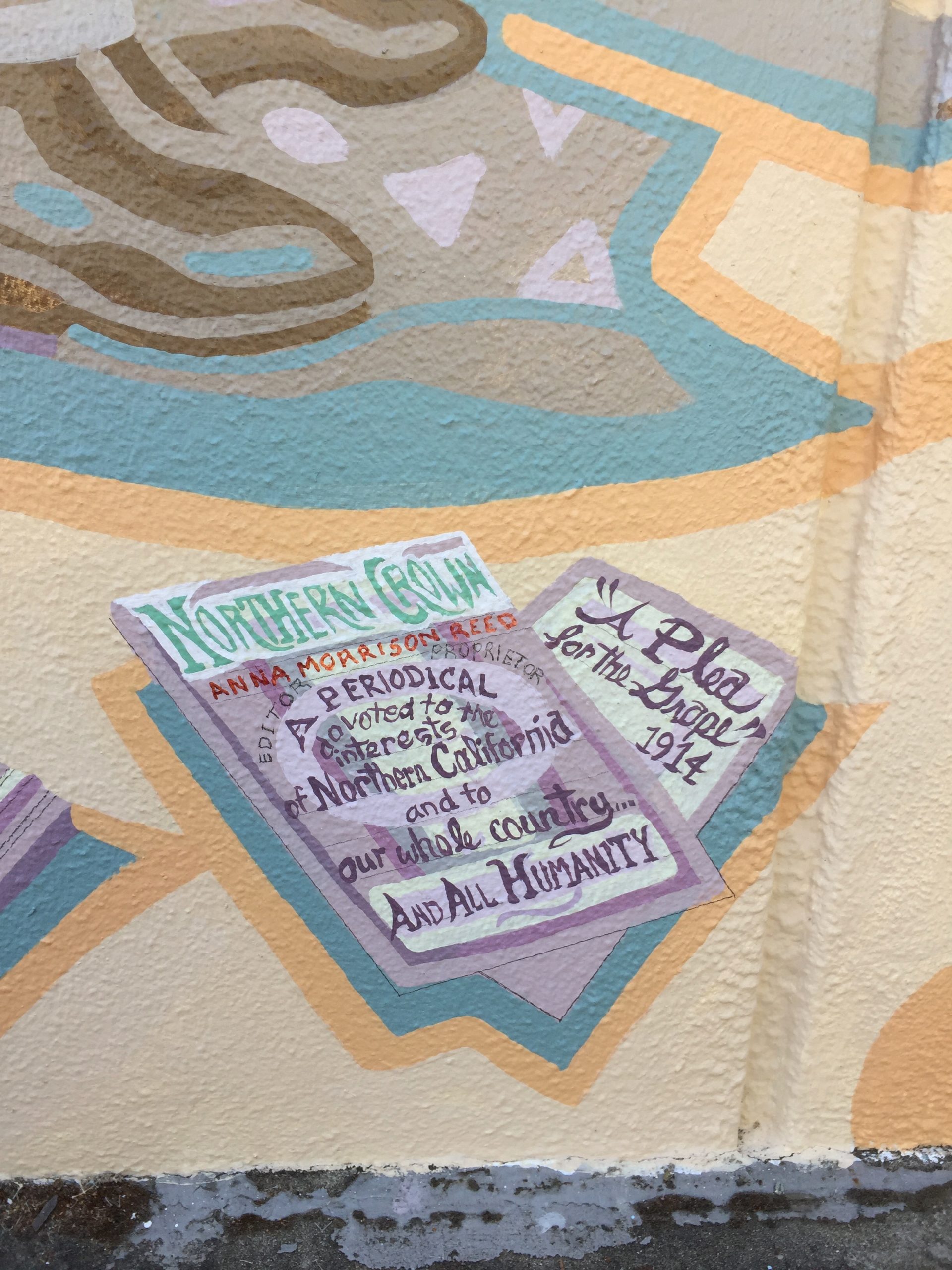
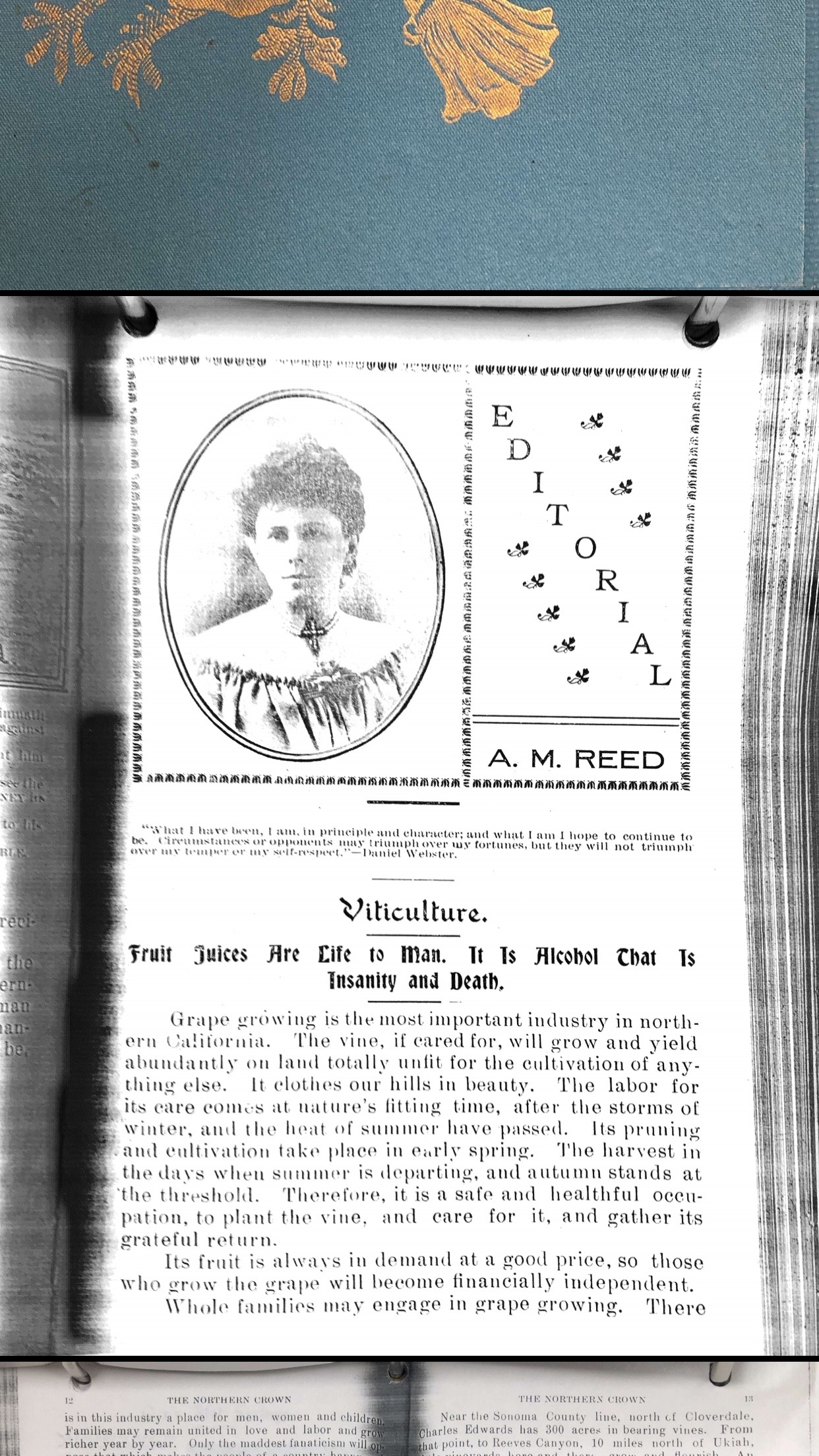
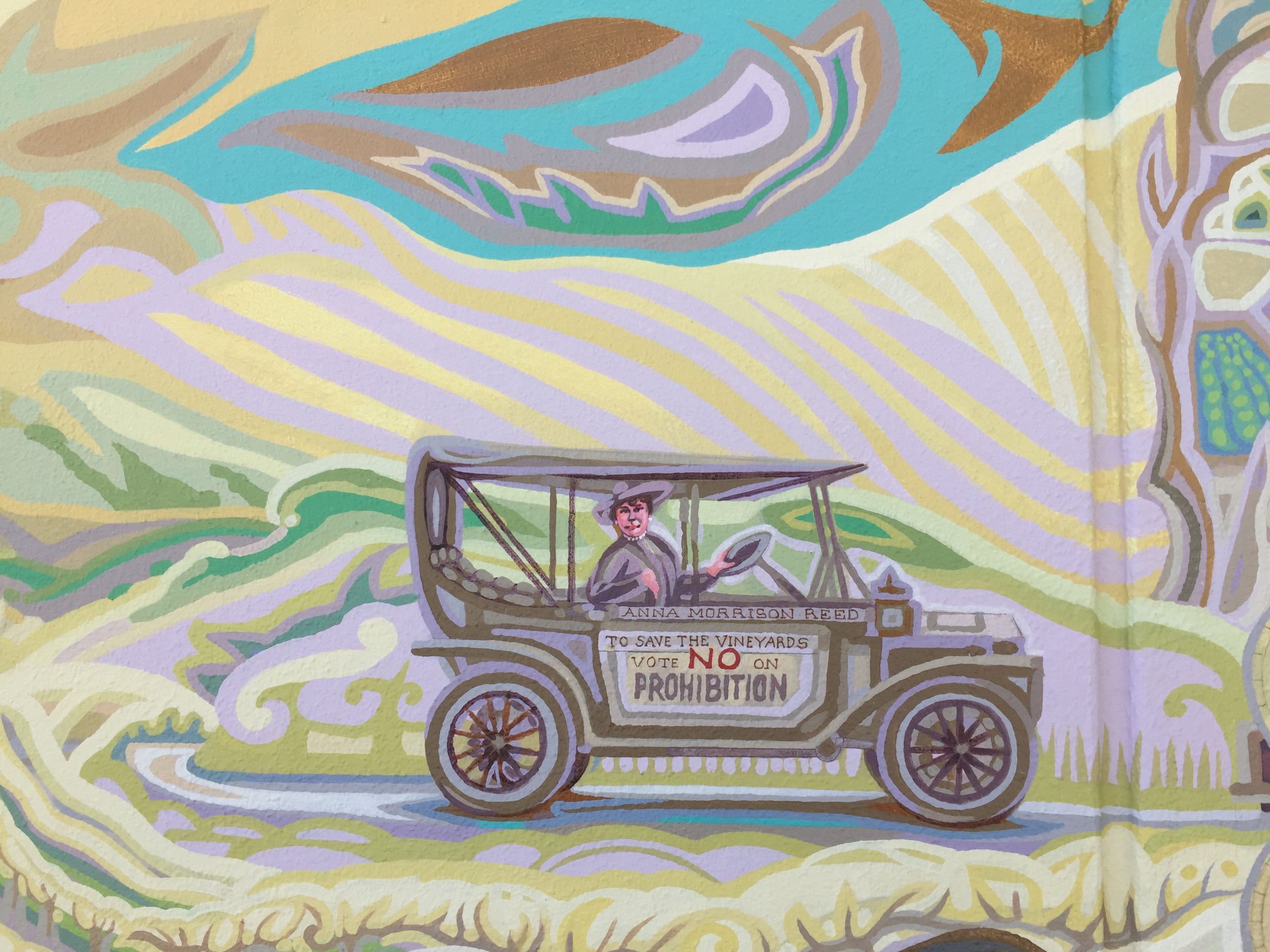
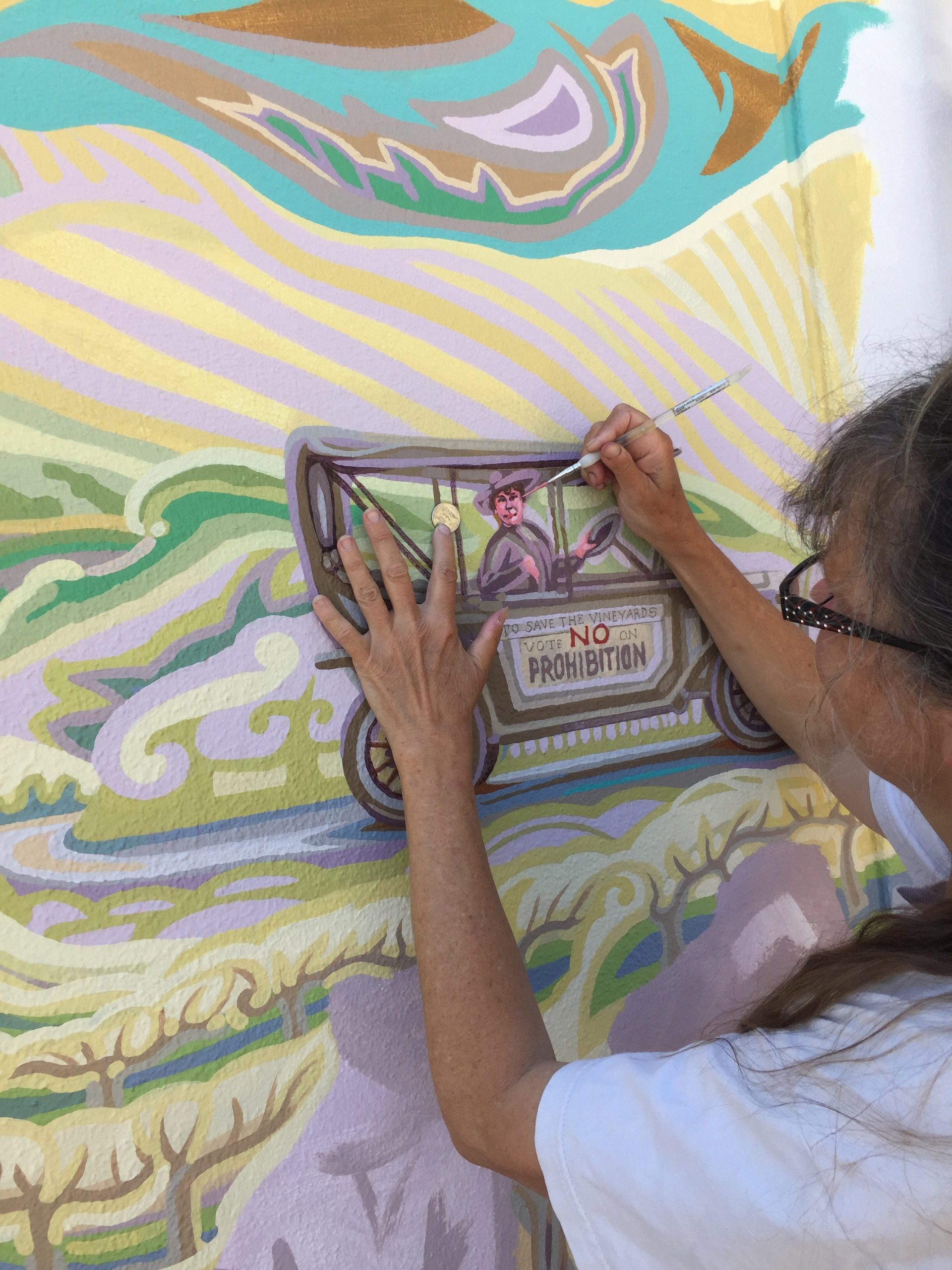

Anna originally lectured on woman’s place being in the home, but she evolved into a suffragist, as well as a campaigner against Prohibition. She wrote “A Plea for the Grape” drawing a distinction between life-sustaining wine and perilous hard liquor.
Previous panel:
Next panel:
